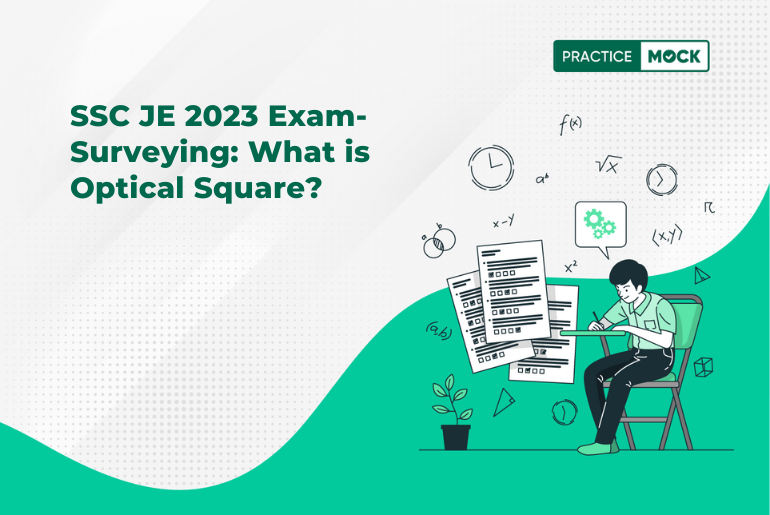Optical square is a marvelous device that can help you measure angles and set out right angles with ease. It is used in surveying, which is the art of measuring and mapping the land. But how does optical square work and what can you do with it? In this article, we will uncover the secrets of an optical square in an easy way. You will learn how to ace any question related to optical square with flair and precision. And don’t forget to take a Free Mock Test to test your knowledge and skills on this topic.
Take 1 FREE SSC JE Civil Engineering 2023 Mock Test! And Discover How to Clear the Exam!
Surveying: What is Optical Square?

An optical square is a tool utilized for establishing right angles. It comprises a compact circular metal box measuring 5 cm in diameter and 1.25 cm in depth, with a movable metal cover to shield the slits.
Principle of optical square:

The working principle of the optical square is based on the concept of reflecting surfaces, where the angle formed between the incident ray and the last reflected ray is twice the angle between the mirrors. In this particular optical square, the angle between the mirrors is a fixed 45 degrees, resulting in a 90-degree angle between the horizon sight and the index sight.
Construction of optical square:
- The construction of the optical square involves the placement of a horizon glass “H” at the bottom of the metal box. The lower half of the glass remains unsilvered, while the upper half is silvered.
- Additionally, an index glass “I” is also fixed at the bottom of the box, fully silvered.
- The angle between the index glass and horizon glass is maintained at 45 degrees.
- The horizon glass is positioned at an angle of 120 degrees with the horizon sight, while the index glass is set at an angle of 105 degrees with the index sight.
Q. The construction of an optical square is based on the principle of
(a) Reflection
(b) Refraction
(c) Double refraction
(d) Double reflection
ANS: (d)
SSC JE 2023 Mock Test for Ultimate Practice
FREE SSC JE Civil Engineering 2023 Mock Test: Are You Ready for the Challenge? Find Out Now!
- Sign Up on Practicemock for Updated Current Affairs, Free Topic Tests and Free Mini Mocks
- Sign Up Here to Download Free Study Material
Free Mock Tests for the Upcoming Exams
- IBPS RRB PO Free Mock Test 2024
- IBPS RRB Clerk Free Mock Test 2024
- SSC MTS Free Mock Test 2024
- SSC CHSL Free Mock Test 2024
- SSC CGL Free Mock Test 2024
- GATE Mechanical Free Mock Test 2024
- GATE Civil Free Mock Test 2024
- RRB ALP Free Mock Test 2024
- SSC CPO Free Mock Test 2024
- AFCAT Free Mock Test 2024
- SEBI Grade A Free Mock Test 2024
- IFSCA Grade A Free Mock Test 2024
- RBI Grade A Free Mock Test 2024
- RRB JE Free Mock Test 2024
- NABARD Grade A Free Mock Test 2024
- IBPS PO Free Mock Test 2024
- IBPS Clerk Free Mock Test 2024
- Free SSC Live Test


